Lithium-Ion (Li-Ion) Batteries
By Mahmoud Amin (Mar. 30, 2015)
Introduction
Lithium-Ion Batteries are the most commonly used batteries in the consumer electronics market due to their high energy density and relatively low weight makes them an attractive choice for manufactures. Lithium-Ion batteries can be connected to form packs. All of these features make lithium-ion batteries the leading energy storage technology in hybrid electric vehicle and all-electric vehicles. Hybrid electric vehicles use packs with capacities up to 15 – 20 kW-h and all-electric vehicles use packs with capacities up to 50 kW-h.
Although Lithium-Ion batteries are a relatively new technology compared to lead-acid batteries, the technology is advancing at a fast rate. A lot of research and development being done improve size and durability. The worldwide production volume of lithium-ion batteries was approximately 10 to 12 G-Wh per year in 2010, the anticipated manufacturing scale will be approximately 35 G-Wh by 2015.
Brief History
Lithium Batteries were first introduced by M. S. Whittingham while working at Exxon in the 1970s. Whittingham is now working at Binghamton University. Whittingham’s research decided to use only lithium compounds instead of metallic lithium. Early Lithium Ion Batteries were very unstable and early efforts to bring it into the market failed. Research teams spent the next couple of years stabilizing and increasing energy density of Lithium-Ion batteries.
In 1991, Sony introduced the first commercial lithium-ion battery. It quickly became the leading consumer product battery used in most portable devices. In 2011, lithium-ion batteries accounted for 66% of all portable secondary (i.e. rechargeable) battery sales in Japan.
How it works
Each cell has three components: a positive electrode, negative electrode, and an electrolytic chemical between them. The positive electrode is made from a lithium compound and the negative electrode is made from carbon.
While charging, the positive electrode passes its lithium ions to the negative electrode through the electrolyte. This causes the electrolyte to store energy. When the battery is discharging the lithium ions move back from the negative electrode to the positive electrode.
Applications
Due to Lithium-Ion batteries attractive life cycle, compactness and safety record, Lithium-Ion batteries are being considered for grid support applications, Like the Distributed Energy Storage systems(DESS) to provide energy storage for communities, home back-up energy systems, frequency regulation, wind and photovoltaic leveling and transportable energy storage system(Figure 1 and 2).
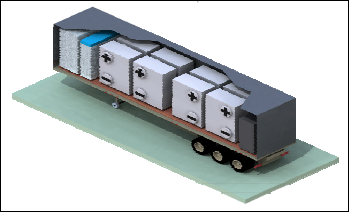
Figure 1 : conceptual design of a 1-MW/2-MWh transportable energy storage system using Li-ion EV battery packs integrated for grid-storage solutions
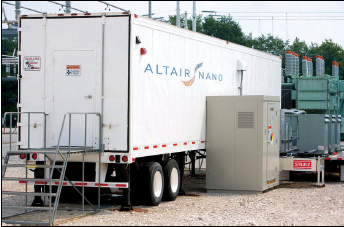
Figure 2: 1-MW/250-kWh transportable Altairnano Li-ion energy storage system
Early systems are currently being tested to use a small 10 – 20 kWh distributed system and large 1 MW/15-minute fast responding system for frequency regulation. Several electric utilities are planning to launch 25-50-kW DESS systems. Companies like Altair Nano Have a 1-MW/250-kWH trailer mounted to service both the ARS and PJM interconnection transmission systems, while A123 systems have a 2-MW unit serving California’s independent system operator and a 12 MW installed in the Atacama Desert, Chile (Figure 3). The system uses Li-ion Hybrid Ancillary power units. In 2010 there was approximately 18 MW of grid connected Lithium Ion battery systems deployed.
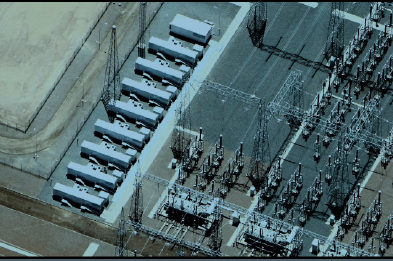
Figure 3 – Commercial operation of a 12-MW frequency regulation and spinning reserve project at AES Gener’s Los Andes substation in the Atacama Desert, Chile.
Properties
There are different types of Li-ion battery systems with different chemistries. Every chemistry has its own cost and performance characteristics. Data is available for average systems but not Durability and lifetime data due to Lithium Ion batteries being a relatively new technology. Properties of lithium Ion batteries that are used for different applications are summarized in the following tables. Table 1 summaries lithium-ion battery properties for large scale commercial and industrial applications and table 2 summarizes thier properties for consumer and small scale applications.
Table 1 – Lithium-Ion properties for commercial and industrial applications (MW scale)
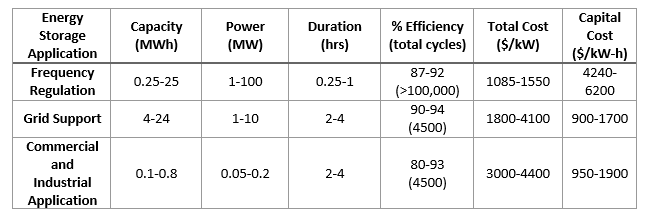
Table 2 – Lithium-Ion properties for consumer and small scale applications (kW scale)
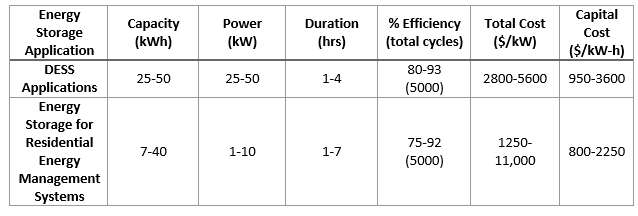
Advantages
- High Energy density 100-200 Wh/kg – Lead-acid and Ni-Mh can store 40-50 Wh/Kg.
- Light weight and High power 1000-5000 W/kg – Hydro enegry storage and Flywheels require a large space to be stored and generally have less W/kg.
- Low Maintenance – no periodic discharge is needed – Old batteries would lose their storage ability if they were not charged and discharged periodically.
- Fast and Efficient charging – Most other storage systems take around 5 times longer to charge, like hydro energy storage requires water to be pumped into a reservoir to be stored which takes time.
Disadvantages
- High cost around $1000/kWh more expensive than other energy storage systems, for example pumped hydro storage costs $420-500/kWh and lead acid costs $325/kWh.
- Requires protection circuits.
- Still a new technology compared to other energy storage options. Lithium-Ion was just introduced commercially in 1991.
Source
- Electricity Energy Storage Technology Options, EPRI, Palo Alto, CA: December 2010. 1020676
- Woodford, Chris. (2009) Lithium-ion batteries. Retrieved from http://www.explainthatstuff.com/how-lithium-ion-batteries-work.html. [Accessed (3-30-2015)]